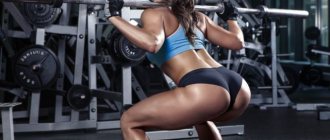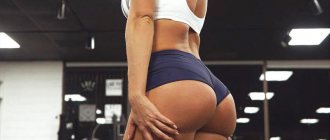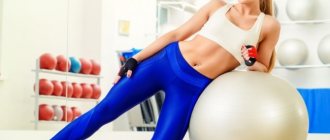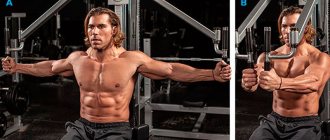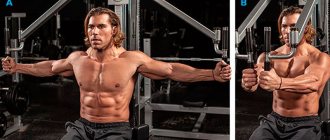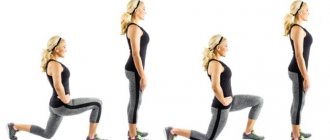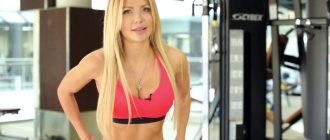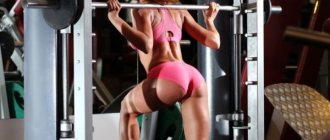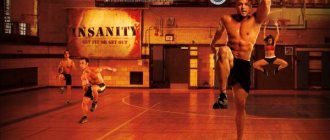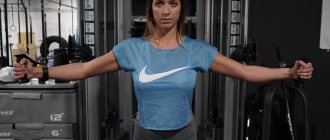The butterfly curl is designed to isolate the pectoral muscles. The chest also works in other exercises, for example, in all presses, push-ups, and pectorals. But in bodybuilding, targeted work is valued, allowing the muscles to acquire that full and voluminous look that everyone strives for. Pronounced pecs are a combination of pressing movements with isolating movements. Working in the simulator allows everyone to exercise, from beginners to high-level athletes. It is safe, and if the training plan is structured correctly, it is effective. The reduction allows you to avoid working in a plane harmful to the shoulder joint, and is suitable for rehabilitation after injuries.
Execution technique
Setting up the simulator:
- The seat must be installed so that the athlete can bring his arms in front of the chest, anatomically speaking, bring the shoulder to the midline of the body. His forearms should be in the same plane with the projection of the shoulder joint;
- The back should be horizontal, the tilt should be removed if there is one;
- If it is not possible to press against the back of the machine due to the length of your arms, you should not grab the handles, but slightly higher or lower, but the shoulder blades touch the back in any case;
- The starting position of the handles is anatomical neutral, that is, the position from which we start with our arms spread to the side, parallel to the floor;
- If you have experience in bodybuilding, your joints work normally, and there are no back problems, you can move the handles back a little so that in the negative phase you feel a greater stretch of the muscles. This option is not recommended for beginners;
- The height of the seat is selected so that the feet touch the floor and there is good support with the legs. If it is not there, you should place blocks or pancakes under your feet.
Starting position - you need to sit on the seat of the exercise machine, rest your feet on the floor, and grab the handles of the exercise machine with a free grip. Next, the shoulders are moved away from the ears, the shoulder blades are pressed against the spine, and lowered to the pelvis. The lumbar arch should be kept natural.
Movement:
- We bring the handles of the simulator to the center of the body, due to the contraction of the chest muscles;
- Shifting the grip upward shifts the emphasis to the upper bundle of the pectoral muscles, lowering it to the bottom of the chest, but the accents are insignificant;
- The extension is done gently, the arms are moved to the sides smoothly, without jerking;
- It is better to bring the movement together and separate it in two counts, without making jerks;
- All repetitions are performed without pauses, in a single approach, rest between sets for 1-2 minutes.
Important:
- It is necessary to ensure that the shoulders do not rise up to the ears and the trapezius muscles are not involved in the movement;
- Reverse deflection in the thoracic spine must be excluded; a round back is the cause of injury;
- The tailbone should be in a neutral position, it does not need to be “pushed” up and pulled towards the lower ribs;
- The legs rest moderately on the floor; there is no point in “pushing” the body up with each repetition;
- The abs need to be tightened and slightly collected, the stomach does not fall out;
- There is no need to make jerky movements, push the handles towards the midline of the body due to inertia, and tear the shoulder blades off the back of the machine;
- Beginners and fitness trainees should not place their arms beyond the midline of the body. This can cause shoulder injuries;
- This is an isolated exercise; you need to measure your capabilities relative to the weight of the weight. It is better to use light weights, but work the muscles carefully, not pushing the machine by inertia, but bringing your arms together and straining your pecs
Important: if a person does not feel how to strain the pecs during the reduction, he can try the reduction with light dumbbells while lying on a straight bench. This movement teaches you to bring your arms to the center without additional inertial movements and shoulder work.
Reduction of arms in the Butterfly simulator: technique of execution
Increased efficiency
How to make your workout more effective?
- Make your classes regular. Since the exercise only takes 10 minutes to complete, you can easily incorporate it into your daily routine.
- Concentrate on your breathing. Regular breathing helps achieve a deeper stretch.
- Remember to keep your back straight. If you start hunching over, the oxygen supply to your lungs will be difficult and the butterfly will not give the desired result.
- Try doing the exercise in the morning. It will energize you and prepare your muscles for the stress of the workday.
- Evening yoga is also very beneficial. Stretching the muscles of your legs and buttocks will help relieve tension and set you up for relaxation.
The butterfly is a great exercise that will help you stretch and relax the muscles in your legs and buttocks after a workout. In addition, it is useful for the functioning of internal organs and the emotional state.
If performed regularly, the first results will be noticeable within 1.5-2 months. Your health will improve, your figure will gradually become more feminine and harmonious, and your gait will be freer.
Exercise options
Contrary to popular belief, arm raises in the peck-deck or butterfly machine work not the chest, but the posterior deltoid muscle. It cannot be considered a variation of this exercise.
If there is no deck in the hall, you should:
- Raise your hands with light dumbbells while lying on a straight or slightly inclined bench;
- Bring the crossover handles attached to the upper block in front of you;
- Mixing in front of you in TRX loops
The technical feature of all “bringing” movements is the same - the arms move in the midline, in front of the chest, you cannot “lift” them to the head or lower them to the stomach.
A variant of the movement is working in peck-deck with stops. There is a version of the exercise machine with soft rests for the forearms. It provides reduction through a reduced amplitude, unloading the elbow joint. The technique completely repeats the work in the classic peck-deck with handles. The advantage of this machine is the ability to perform “finishing” after heavy bench presses.
Peck-deck raises are not compensatory, please note; it makes sense to do it not when training your chest, but when training your shoulders or back. It is performed while sitting facing the back of the machine, the arms are pulled back, the handles are pushed to the midline of the body, and smoothly brought to the starting position.
What to look for when choosing a butterfly exercise machine
Almost all butterfly exercise machines for arms and legs have the same design and dimensions. Therefore, when choosing, you should only evaluate the brand, materials and other characteristics of the projectile. It is important to pay attention to the following features:
- The quality of the coating (usually plastic or polyethylene foam) is an entirely individual choice, but “foam” is usually more pleasant to the touch.
- Metal frame – steel is the best choice.
- Spring mechanism – the weak link is usually the connector body. In the best models it is made of a metal alloy, in cheaper ones it is made of plastic.
Analysis of the exercise
Anatomy
- The main mover is the pectoralis major and minor muscles. Due to their contraction, the shoulder is brought to the center of the body; when extended, the muscles compensate for the inertial force and make the work smoother.
- Additional working muscles are the anterior deltoid, serratus anterior, coracobrachialis, and superior head of the biceps.
- Stabilizing muscles - latissimus dorsi, rhomboids, longus dorsi, rectus abdominis, quadriceps and hamstrings, gluteal muscles.
Pros of exercise
- Ability to work at any level of physical development. The exercise is available to both experienced bodybuilders and beginners from the first day of classes;
- The movement places less stress on the shoulder stabilizers than the dumbbell curl in front of the chest. This allows it to be included in rehabilitation programs after shoulder injuries;
- The load is smoothly distributed between all bundles of the pectoral muscles, and allows them to be worked out efficiently;
- There is no work of the pressing muscles - triceps and back. You can train your chest in isolation
Cons of the exercise
- So far, no one has been able to build muscle mass with lifts alone. This movement is needed as an addition to bench presses, and not as a replacement for them;
- The exercise does not work the pectoral muscles, but the shoulder stabilizers are disabled. If you turn on inertia, you can still get injured
Exercise for the pectoral muscles - bringing your arms together in a butterfly simulator
Advantages and disadvantages of exercising with a butterfly expander
The butterfly expander is a simulator that has a fairly simple design. Consists of a spring mechanism and two handles with a semicircle. It is mainly considered a women's exercise machine, as it creates moderate resistance. It is enough to work out and maintain muscle tone in women, but not enough to develop muscles and strength in men.
Main advantages:
- Effective training of the thighs, buttocks, chest muscles and arms.
- Improvement of relief.
- Prevention of diseases of the musculoskeletal system.
- Normalization of hormonal levels (through regular strength training).
- Versatility – the ability to train in any conditions.
- Financial benefit (the cost of the device is quite cheap, which makes it accessible to everyone).
Disadvantages of the butterfly expander:
- Limited progress - sooner or later the load from the machine will not be enough, which will require a transition to power movements with a higher degree of load.
- Poor back muscle training.
- Uniformity of movements - due to the specifics of the simulator, almost all movement patterns in the exercises will be the same.
- Not suitable for men due to low load (can only be used during recovery or in the absence of training experience).
Preparing for the exercise
This movement completes the set of exercises for the chest muscles. It is understood that joint exercises and pre-stretching are done before the first bench press. Beginners should perform no more than 12 working approaches of all exercises per workout; experienced athletes can do more by individually selecting the load.
Stretching muscles in the middle of a workout before one exercise makes no sense. Typically, such actions reduce the strength of muscle contractions and reduce the effectiveness of the exercise.
The exception is stretching the triceps after the main pressing movements. You need to sit on a bench, place your forearm behind your head and lightly press on your elbow. This will help you bring your arms in front of you more comfortably, but will not remove the tone from your chest.
What muscles work
During movement, three large muscles are used:
- Deltoid (posterior head).
- Trapezoidal.
- Diamond-shaped.
are also included , but are not covered as they do not require focused training.
Correct execution of the exercise
Anatomically optimal position - the hands are located in the plane of the midline of the chest. The reduction should be carried out along an arcuate path in front of the chest. If the design of the machine allows you to rest your forearms on the soft rollers, the elbow should be on the midline of the chest.
You can strengthen the work of the pectorals by taking short pauses at the point where the arms are brought together and statically tensing the muscles. But this will not necessarily lead to more significant growth. Such techniques are selected individually, and their effectiveness depends on the structure of the athlete’s muscle tissue and the predominance of a certain type of fiber.
There is no need to allow the brushes to “break” or put excessive pressure on them. The grip should not be too tight; you should bring your hands together comfortably without pinching the handles with your fingers. However, it is better to use a closed grip.
Severing the shoulder blades from the back and tilting the body forward is not allowed. If the athlete prefers to use significant weights, it is worth helping him “move” his arms from a dead point. But this technique is not recommended for beginners and fitness enthusiasts. It is only suitable for experienced bodybuilders.
The effectiveness of the movement decreases if it is performed in jerks. If you experience pain in your elbows, you should monitor how far they are bent and choose the optimal angle. The more flexion at the elbow joint, the more the biceps are involved in the exercise.
Inclusion in the program
A training program cannot be based on information in the simulator alone. The exercise should be included second if we are talking about a beginner who performs two chest movements, or as the final exercise in the program.
Some people prefer volumetric work for 12-15 repetitions, in 3-4 approaches, others prefer a different layout - 10 repetitions in 5-6 approaches. The choice depends on the athlete’s goals. Ten-rep sets are more suitable for working in the strength period, multi-rep sets are more suitable for those who exercise only for the sake of muscle hypertrophy.
Sometimes the movement is used to pre-exhaust the chest in programs aimed at hypertrophy. Similar things are practiced by high-level athletes. Data dropsets are also intended for them - work for 10-12 repetitions with high, and then gradually decreasing weight.
Contraindications
You should always remember that sports are useful in moderation and in the absence of contraindications. Training should be beneficial, so there is no need to overload the body and turn exercise into torture. You should also remember that the “Butterfly” simulator cannot replace dumbbells and barbells; at the same time, you should use other equipment available.
Exercises with the Butterfly simulator can be done in the absence of such pathologies:
- abnormalities in the functioning of the cardiovascular system;
- hypertension;
- fragility of capillaries and blood vessels;
- skin damage;
- skin diseases;
- oncological diseases;
- diabetes.
Pregnant women can play sports, but an important condition is that the doctor supervising them must give consent to this. If pain or discomfort appears, training should be stopped immediately. If the product is made using latex or rubber, individual intolerance to the body is possible when the “butterfly” comes into contact with the body.
When planning workouts with an expander, it is important to consult a doctor or study the contraindications yourself.
